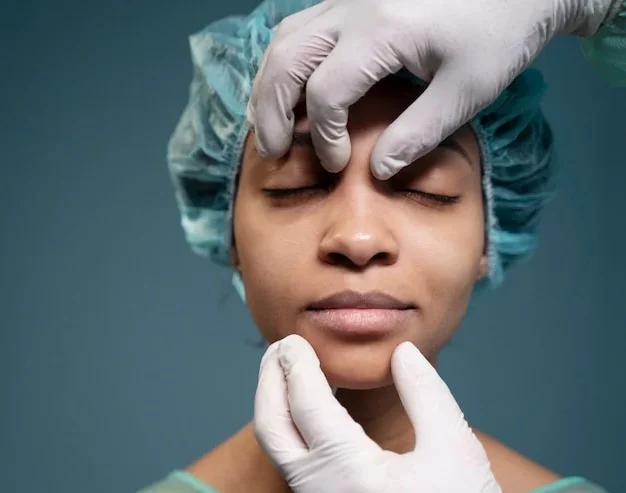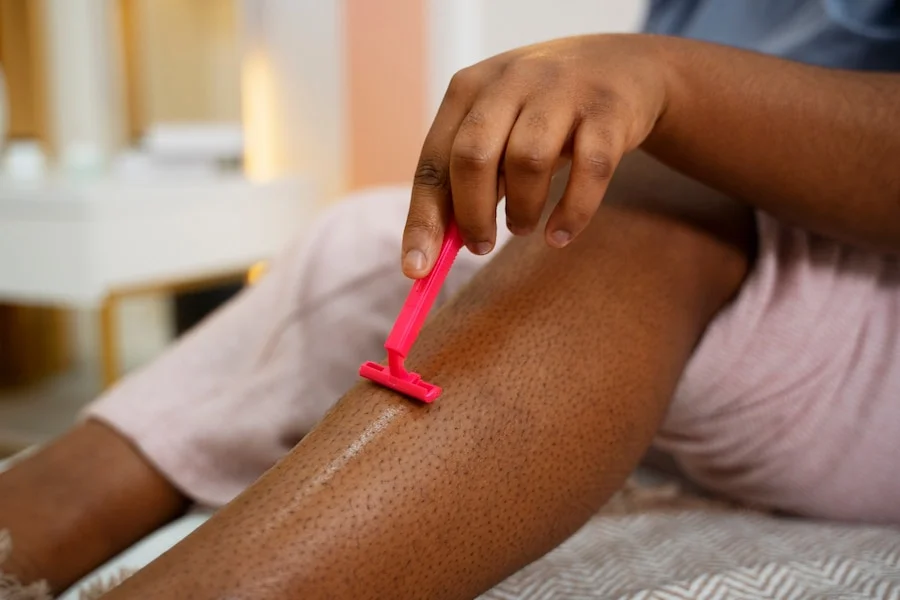Radiofrequency microneedling (RF microneedling) and dermal fillers are two popular cosmetic procedures that address different signs of aging.
While RF microneedling stimulates collagen production for firmer, smoother skin, dermal fillers restore volume and diminish wrinkles.
But can these treatments be combined safely and effectively? This article delves into the science behind these procedures, explores potential interactions, and offers guidance on maximizing the benefits of both for a youthful appearance.
Key Takeaways:
- The heat generated during the procedure is not high enough to break down hyaluronic acid (HA) fillers, the most common type of dermal filler used in Canada.
- To avoid disrupting filler placement or irritating the skin, waiting at least two weeks after filler injections before RF microneedling is generally recommended.
- Alternatively, RF microneedling can be performed before filler injections within a single session.
- Limited evidence of combined treatment risks: A recent study found no documented cases of adverse events when combining RF microneedling with fillers in a single session.
Table of Contents
ToggleUnderstanding Dermal Fillers: Types and Their Effects
Dermal fillers are injectable gels, typically made of hyaluronic acid (HA), a naturally occurring sugar molecule in the skin. They plump up wrinkles, add volume to areas that have lost fullness due to aging, and enhance facial contours.
Hyaluronic acid (HA) products are the most commonly used dermal filler types in Canada. These fillers are temporary, lasting 6-18 months on average as the body naturally breaks them down.
There are other types of fillers besides hyaluronic acid. Calcium hydroxyapatite (CaHA) fillers, like Radiesse®, offer results that can last a year or even longer.
This extended duration is because the filler stimulates the production of collagen, which makes the skin appear firmer and more supple.
Radiesse is unique in that it can also act as a biostimulatory agent, boosting both elastin and collagen production not only in the face but also in other areas.
Poly-L-lactic acid (PLLA) fillers are another option. Sculptra®, a PLLA-based biostimulator, can provide results lasting up to two years. It works by strengthening the skin’s underlying structure through increased collagen production.
Related: Is RF Microneedling Better Than Microneedling For Glowing Skin?
RF Microneedling and Its Role in Stimulating Collagen Production
RF microneedling, or radiofrequency microneedling, is a popular and advanced aesthetic procedure that continues to gain traction in 2024.
Its effectiveness lies in its ability to stimulate collagen production within the skin. This treatment combines two technologies: microneedling and radiofrequency energy.
Microneedling involves using tiny needles to create controlled micro-injuries in the skin’s dermal layer. RF microneedling takes this a step further by delivering radiofrequency energy through the needles as they penetrate the skin.
This energy heats the deeper layers, causing existing collagen fibers to contract and prompting the body’s natural healing process, known as neocollagenesis.
Neocollagenesis is how the body repairs and replaces damaged collagen fibers with new ones. The heat from the radiofrequency energy has a two-fold effect.
It immediately tightens existing collagen fibers, leading to firmer skin, and also stimulates fibroblast activity.
Fibroblasts are the cells responsible for producing new collagen, elastin, and other essential components of the skin’s structure.
By activating these fibroblasts, RF microneedling promotes the synthesis of new, stronger, and more organized collagen fibers.
The healing process triggered by RF microneedling also increases the production of other beneficial proteins and growth factors that contribute to overall skin rejuvenation.
This translates to not only firmer skin due to collagen production but also improvements in texture and tone.
Related: Is Potenza™ Good For Acne Scars?
Can RF Microneedling Affect My Fillers?
A common concern is whether RF microneedling can dissolve existing dermal fillers. The concern stems from the heat generated during the procedure.
However, research suggests a nuanced picture. The key factor influencing potential damage is heat.
Studies have shown that a much higher temperature (around 160°C or 320°F) is needed to significantly alter the structure of HA fillers.
The heat generated by RF microneedling typically reaches 65-75°C (149-167°F), which is significantly lower than the threshold required to dissolve fillers.
While RF microneedling likely doesn’t dissolve fillers directly, the heat might indirectly accelerate the natural breakdown of HA fillers, potentially shortening their lifespan.
Microneedling creates tiny channels in the skin. If performed too soon after filler injection, these channels could disrupt the filler placement or distribution, leading to uneven results.
Related: Ultherapy vs. RF Microneedling: Which is Right for Your Skin?
Combining Radio Frequency Microneedling and Dermal filler procedures
Combining RF microneedling with dermal fillers can be a powerful approach to facial rejuvenation, but careful planning is needed.
Some medical aestheticians recommend waiting at least two weeks after filler injections to undergo RF microneedling treatment.
Exceptions may occur if the filler is injected into an area that will not be treated with RF microneedling.
This allows the fillers to settle and any side effects to subside. This timing minimizes the risk of microneedling interfering with the filler results or further irritating the skin.
However, the order of treatments can be flexible. If RF microneedling is performed first, some patients may be able to receive fillers on the same day or soon after.
While some medical professionals expressed concerns that the heat from RF microneedling could negatively impact fillers (potentially causing volume loss, tissue death, burns, or migration), a recent study published in the Journal of Cosmetic Dermatology offered encouraging results.
The study reviewed patient records over 4.5 years, specifically focusing on those who received combined radiofrequency microneedling and cosmetic injectable treatments like injectable neuromodulators (such as BOTOX® and Dysport®) or soft-tissue fillers in a single session.
Notably, the researchers found no documented cases of adverse events directly linked to the combination therapy.
It’s important to remember that every patient’s needs are unique. A qualified medical aesthetician will assess your individual situation, including your skin type, the type of filler used, and your desired outcome.
This personalized approach helps determine the best treatment sequence and minimize the risk of complications.
Related: Botox After Microneedling: 5 Key Benefits You Need to Know
Conclusion
While RF microneedling likely doesn’t directly dissolve HA fillers, potential interactions necessitate careful planning and a qualified professional’s guidance.
Consulting a board-certified medical aesthetician with experience in both procedures is crucial. They can help you achieve optimal results and a safe, effective treatment journey towards a rejuvenated appearance.
By understanding the potential interactions and following proper treatment sequencing, you can achieve a rejuvenated appearance with both procedures.
Remember, effective communication with your medical aesthetician is key to a safe and successful cosmetic journey.
Quick Links
Service Areas

Dr. Lian Peter, MD, MPH, CCFP, is a Family physician with a passion for aesthetics. In her aesthetic clinic, she provides a wide range of minimally invasive and non-invasive procedures, constantly honing her skills to deliver exceptional care and help patients attain their desired appearance.






